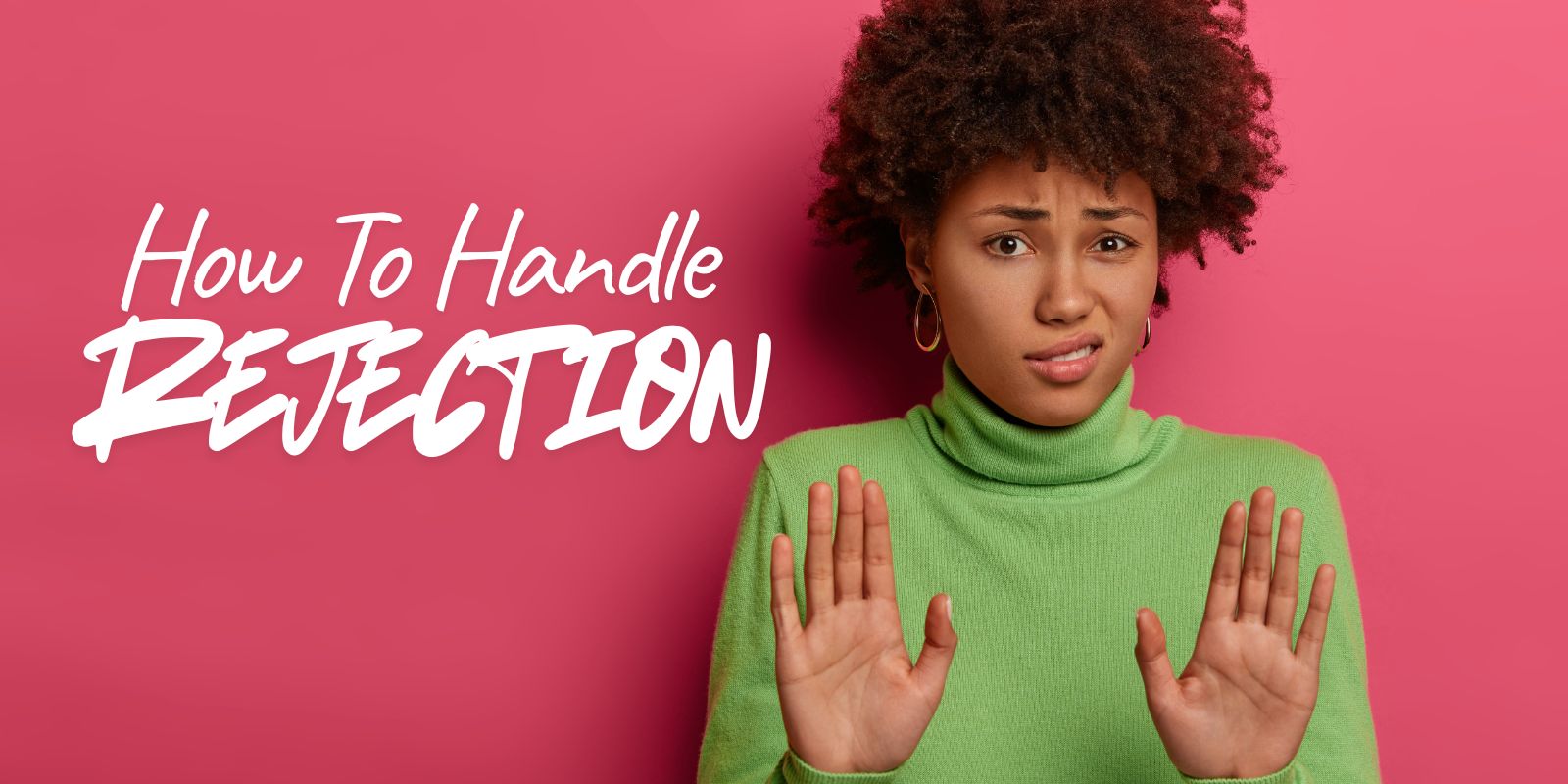How To Handle Rejection: Turning “No” Into Growth and Self-Respect
How To Handle Rejection isn’t easy. The word “no” can feel personal, even when it isn’t. Maybe someone ghosted you, declined a scene, or just said they weren’t ready. It’s natural to feel that sting—it touches pride, desire, and hope all at once. But rejection doesn’t define your worth; it just gives you a new moment to practice self-respect.
Learning to handle rejection builds resilience and emotional control. It teaches you how to sit with discomfort instead of reacting to it. Whether you’re navigating dating, friendship, or kink, every “no” becomes a chance to understand yourself better. That self-awareness is what keeps you strong, open, and kind to others later on.
Table of Contents – How To Handle Rejection
- Why Rejection Hurts and What’s Really Going On
- Honest Self-Check: Processing Your Feelings
- Practical Steps for Rebuilding Confidence After a “No”
- Turning Rejection Into Better Boundaries and Choices
- Key Takeaways
- FAQs
Why Rejection Hurts and What’s Really Going On
Rejection feels sharp because the brain treats social pain like physical pain. When someone turns you down, stress hormones rise, your chest tightens, and thoughts speed up. It’s biology, not weakness. Once you know that, you can stop blaming yourself for feeling too much. The body is wired to protect connection—it just overreacts sometimes.
Most of the emotional weight comes from what rejection triggers underneath. Maybe it reminds you of being ignored as a kid, or of the risk you took by being honest. That’s why one “no” can feel so heavy. Recognising these layers helps separate the current moment from old memories. It’s not about fixing every feeling—it’s about naming the right one for today.
To calm the body’s alarm system, give it something simple to do. Breathe slowly for thirty seconds, stretch your hands, or step outside for air. Physical grounding tells your brain you’re safe again. For extra guidance, Calm’s article on handling rejection walks through small, science-backed ways to ease that initial shock before you start analysing what happened.
Honest Self-Check: Processing Your Feelings
After the first wave passes, sit down and ask what’s really hurting. Is it disappointment, loss of control, or embarrassment? Label each emotion. Naming turns chaos into data—it gives shape to something that felt like fog. When you see it clearly, it stops owning you.
Don’t rush to “be okay.” Healing after rejection takes time and honesty. Instead of burying the feeling, try writing a few short sentences: “I’m upset because I hoped this would work.” That’s truth without judgment. It keeps empathy alive for both sides. Let the silence after that sentence breathe—it often carries more healing than a hundred affirmations.
For a structured, gentle approach, read Psyche’s guide on processing rejection. It breaks emotional recovery into small, daily habits that make handling rejection easier with practice. The more honest you are in this stage, the stronger you become when love, work, or play tests your boundaries again.
Practical Steps for Rebuilding Confidence After a “No”
Once the initial sting fades, How To Handle Rejection turns into a lesson in confidence. The goal isn’t to “get over it” fast—it’s to rebuild slowly, with small wins that remind you of your value. Start with one solid routine that reconnects you to your body and space: morning walks, good meals, or cleaning your room. Routine builds grounding when emotions feel messy.
Next, reframe what happened. Instead of “I failed,” try “That connection wasn’t right for now.” This isn’t sugar-coating—it’s balance. You can respect your effort without needing approval from someone else. Confidence grows when you separate your worth from someone’s reaction. Revisit hobbies, creative outlets, or kink practices that make you feel alive again.
I’ve faced rejection in both dating and teaching kink workshops. Early on, one person told me I was “too intense.” It stung. But that comment taught me to check energy, not tone myself down. Later, others said that same focus made them feel safe and seen. The lesson: rejection isn’t always an insult—it’s feedback about fit, timing, or readiness.
Build new momentum with one bold step—join a class, post an idea, message a friend. Rejection loses power when you prove to yourself you can move again.
Turning Rejection Into Better Boundaries and Choices
Rejection clears space for better boundaries if you listen closely. It highlights what didn’t work and what you need next time. Maybe it’s better communication, emotional pacing, or choosing partners who value your effort equally. Learning How To Handle Rejection turns pain into a filter for higher standards, not fear.
Use this time to map what you’ll say or do differently in future connections. It’s not about hard walls—it’s about knowing your limits and comfort zones. Explore modern dating and relationship styles through guides like Dating Apps for LGBTQ and Navigating Open Relationships. They show how open communication and boundaries help protect emotional safety and desire equally.
- Rejection isn’t punishment—it’s information.
- Boundaries are self-care, not control.
- Every “no” is practice for a clearer “yes.”
- Focus on shared respect, not proving your worth.
- Remember: space doesn’t mean failure—it means choice.

Key Takeaways
- How To Handle Rejection starts with calm awareness, not denial—feel it before fixing it.
- Emotions after rejection are normal; your response is what builds long-term strength.
- Rejection doesn’t erase your worth—it redirects your focus to better fits and timing.
- Boundaries and communication improve naturally when you reflect rather than react.
- Healing takes time, but each pause and reflection sharpens confidence for what’s next.
FAQs – How To Handle Rejection
Q1. Is it normal to feel physically ill after rejection?
Yes. Rejection activates stress hormones, which can cause tension, fatigue, or nausea. Treat it like short-term emotional flu—rest, hydrate, and move gently until your body resets.
Q2. How can I stop internalising a “no”?
Separate the situation from identity. Say, “That didn’t work,” instead of “I failed.” Remind yourself that chemistry and timing matter more than personal worth.
Q3. How long should it take before I feel okay?
There’s no fixed time. It depends on how deep the connection felt. Healing happens faster when you stay kind to yourself and avoid constant overthinking or self-blame.
Q4. Can rejection actually help my future relationships?
Yes. It shows where communication or values didn’t align. When you reflect on it calmly, rejection becomes feedback that improves your choices and confidence next time.
Q5. When should I ask for professional help?
If sadness or anxiety lasts weeks or disrupts daily life, talk to a therapist. Rejection hurts, but no one has to heal alone. Support speeds recovery and builds stronger coping skills.
Annie Wu is a lifestyle blogger and kink educator who writes about BDSM, power exchange, and Findom—sharing real insights into the world of adult kink.



Leave a Reply